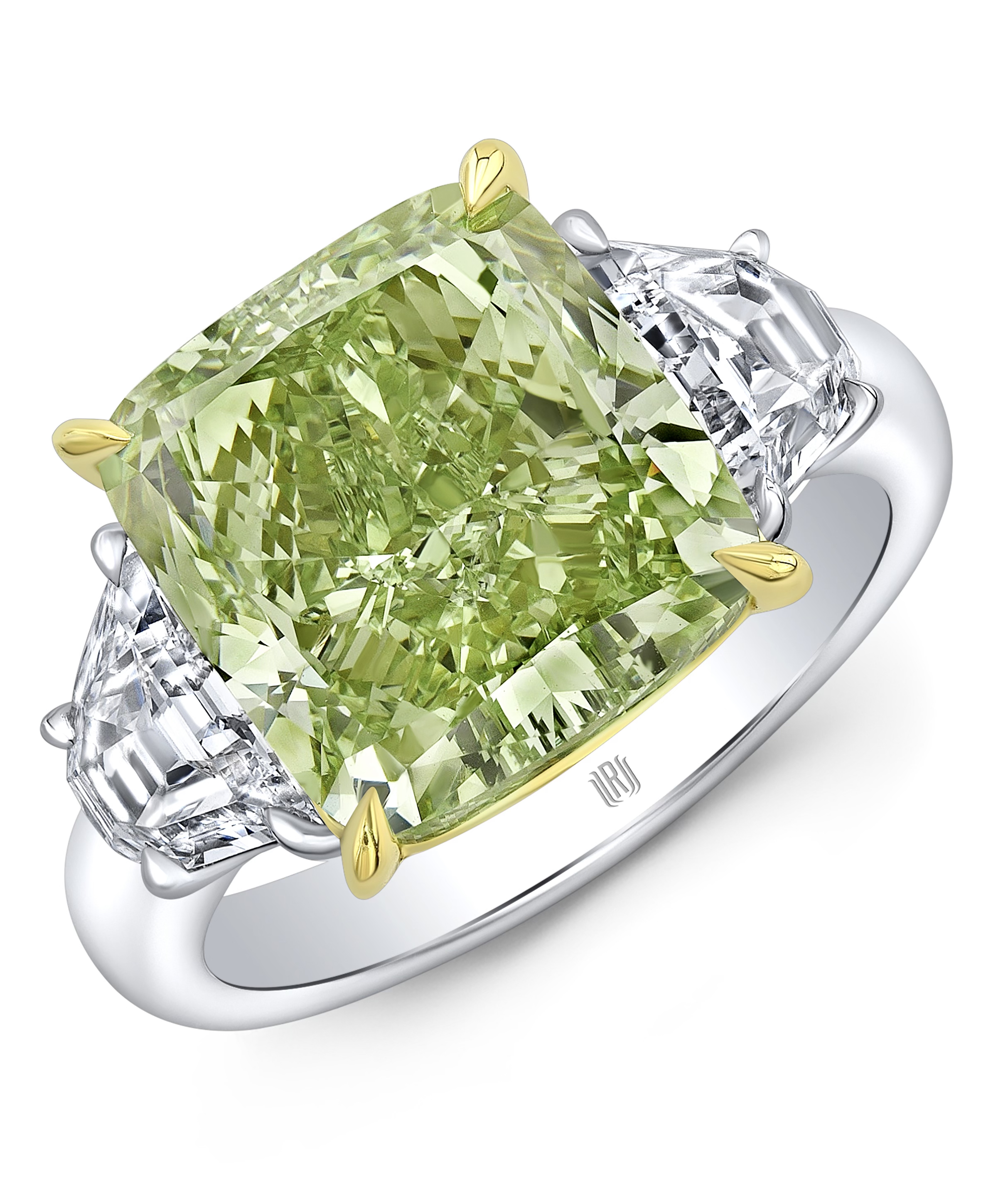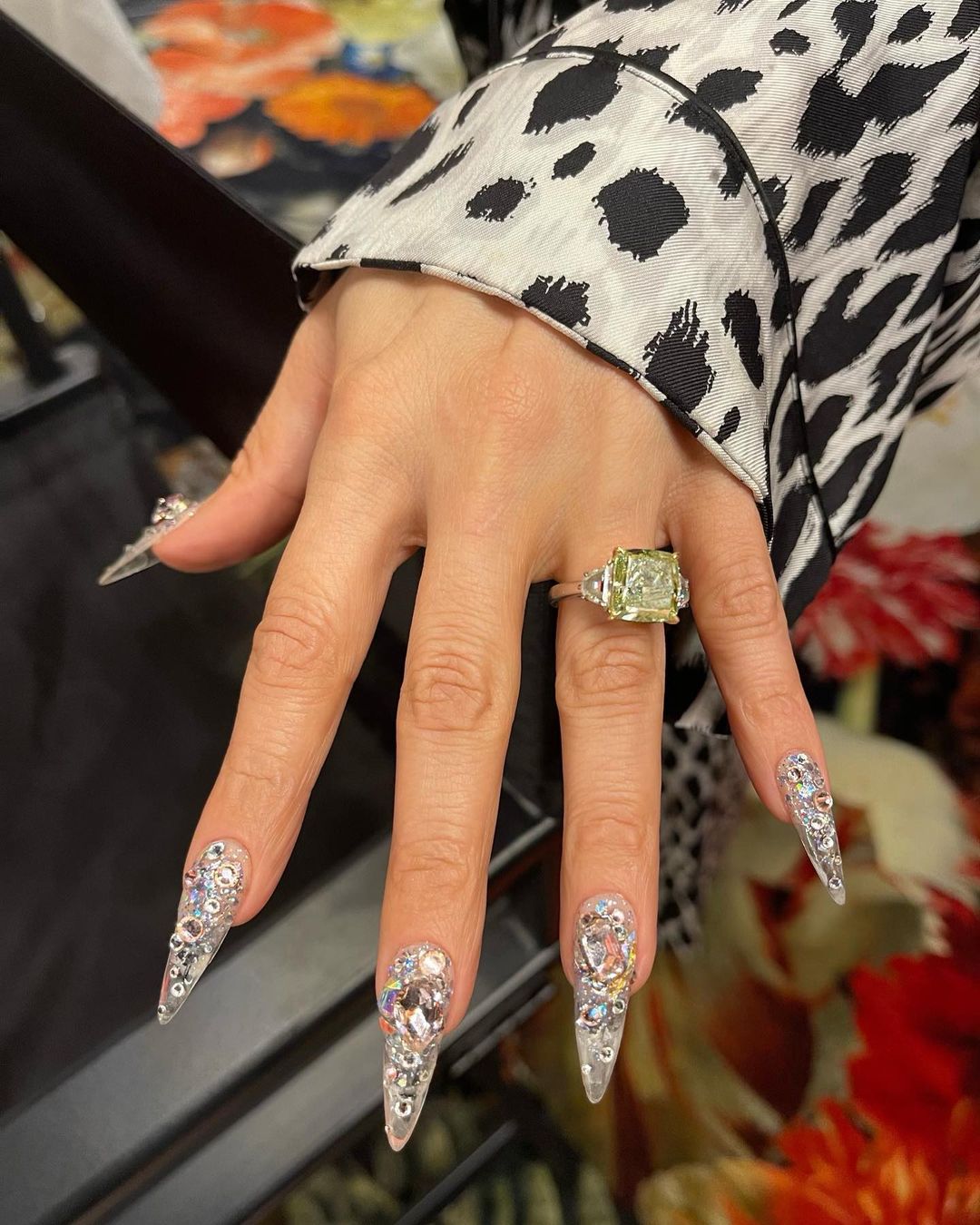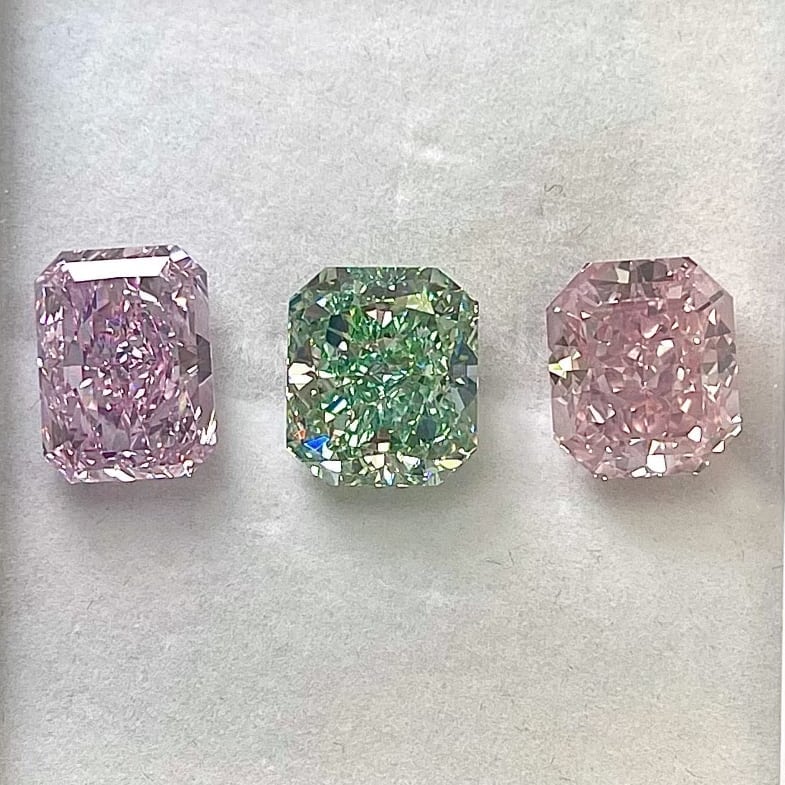J Lo’s Green Diamond Engagement Ring from Ben Affleck has Officially Made it Down the Aisle! 
Jennifer Lopez and Ben Affleck’s engagement has us all talking about green diamonds.

Ever since Jennifer Lopez and Ben Affleck walked down the aisle in front of their family and friends at Ben’s property in Savannah, Georgia, a month after their late-night wedding ceremony in Las Vegas, we’ve been thinking about her green diamond engagement ring. Green diamonds are extremely rare and unique, especially when it’s as big as the Rahaminov beauty J. Lo is sporting on her ring finger.
Read More: Green Diamonds: A Stunning Result of Natural Irradiation
But first, let’s talk about one of the biggest celebrity weddings of the year. “Love is beautiful. Love is kind. And it turns out love is patient. Twenty years patient” wrote J. Lo in her newsletter ‘On the J. Lo.’ The couple flew to Las Vegas to get their same-day wedding license and “barely made it to the little white wedding chapel by midnight.”

Lopez wore a dress from an old movie and the couple exchanged vows with their kids by their side. They exchanged matching rings and drove off into the sunset for their happily ever after. But now, back to the engagement ring with Grant Mobley, our in-house gemologist, who gave us his take on this exciting announcement.
“The rarity of a natural green diamond cannot be overstated,” he revealed. “Generally speaking, green is the second rarest natural color of a diamond with fancy red being the rarest.” Given Ben’s first proposal to Jen was with a pink diamond, it only makes sense he would go for green this time around. “Only a small handful of green diamonds come to the market every year and almost never are they in the vivid color and size of this diamond.”

The diamond in J. Lo’s ring is an 8.5 carat cushion cut, purchased from Ilan Portugali of Beverly Hills Diamonds, set in a classic platinum mounting with a trapezoid-shaped white diamond on each side. As with all fancy colored diamonds, a green diamond can be classified as faint, light, intense, vivid or deep. “The exact color grading of the diamond has not been disclosed but it is clear in the photos that it is exceptional and among the rarest,” says Mobley. “I believe it would be graded as “Fancy Vivid Green and I would estimate the value to be at least $8 million.” Mic, dropped.

Just like J.Lo’s amazing pink diamond engagement ring that Ben gave her the first time, you can expect the value of this green diamond to significantly increase over time. “Decades of price data show that all natural diamonds gradually increase in value over time and natural fancy color diamonds increase significantly faster, making them a very solid investment,” Mobley tells Only Natural Diamonds. “One you can wear and enjoy.”
Sarah Jessica Parker said it best: “I like my money where I can see it. Hanging in my closet.” Or, better yet, lovingly cared for in a jewelry box!

So how do green diamonds actually get their incredible color? It all has to do with exposure to natural radiation deep within the Earth after they’ve formed. “This causes them to reflect green light,” explains Mobley. “It is very rare for this to penetrate through the entire rough diamond, so the green color is usually just a thin layer on the surface of the rough diamond.”
Because the color lies on the surface, cutting green diamonds is a very tricky and meticulous process. “A diamond like this could have taken a year or more to plan and cut to ensure that it reflects the best cut and color possible,” reveals Mobley.
Natural diamonds can be treated with irradiation after they are discovered to give them a green tint, “but that is a man-made process and they would not be as valuable as a colored diamond that was naturally formed,” he explains. Man-made diamonds or color-treated diamonds can always be distinguished from all-natural diamonds and are less rare than the colored diamond that gets its color under the Earth’s surface. “If it is man-made, its value is down to only the cost of production, which decreases over time.”
